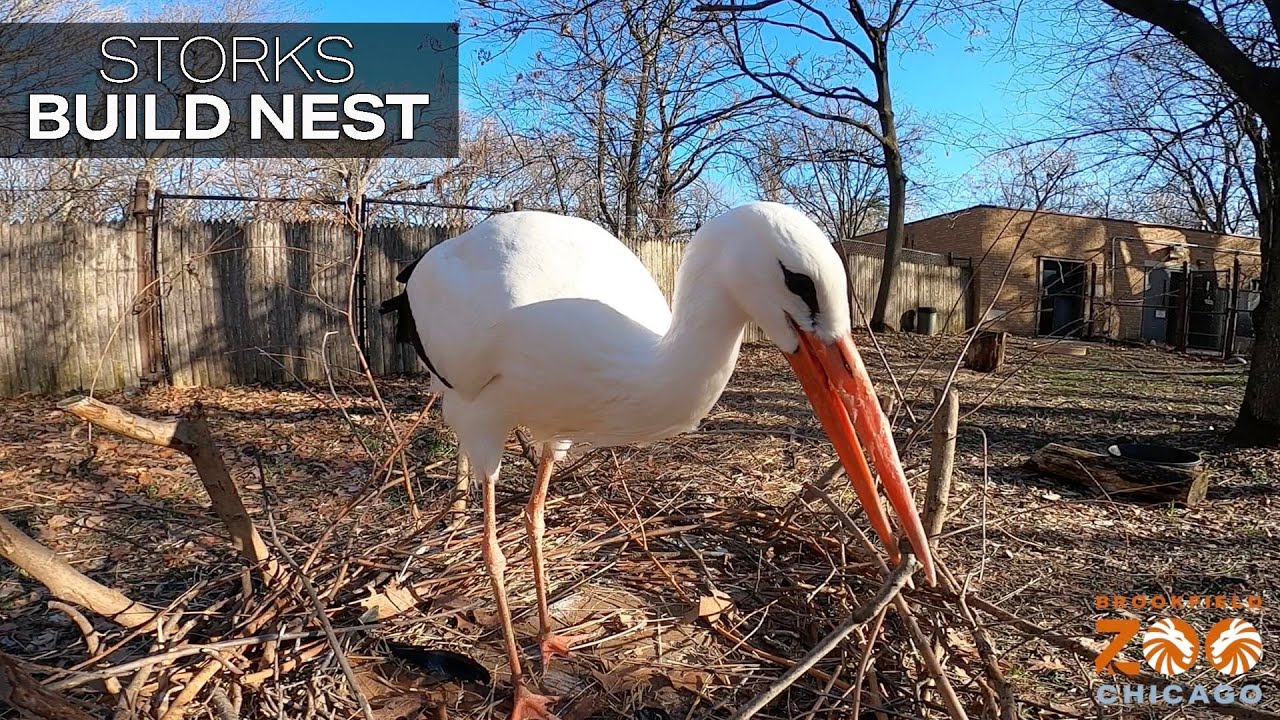– The behavioral ecology and biology behind stork nesting habits
– Nest-building techniques and materials used by storks
– The role of storks in ecosystem balance and their conservation status
– Challenges faced by storks in urbanized landscapes and conservation efforts
– The significance of citizen science and public engagement in stork conservation
Storks have fascinated people for centuries for their striking appearance and migratory patterns and their intricate and often highly visible nest-building behaviors. The sight of these large birds constructing their homes atop trees, buildings, and other structures is a reminder of the incredible adaptability and skill these avian architects possess. Storks, belonging to the family Ciconiidae, symbolize rebirth and fertility in various cultures, and their nesting habits are an exemplary model for understanding avian ecology and behavior.
Storks select nesting sites based on many factors, including proximity to feeding grounds, the availability of suitable platforms, and the presence of other storks. They are known for their fidelity to nesting sites, and some pairs will return to the same structure year after year, improving and enlarging their nests each season. These nests can be large, reaching over six feet in diameter and weighing hundreds of pounds.
The materials used in nest construction are primarily sticks and branches collected by male and female storks from the surrounding environment. They may also incorporate other materials such as plastic, cloth, or even garbage, demonstrating their ability to adapt to human-altered landscapes. The nest’s interior is lined with softer substances, including grass and moss, to create a comfortable and insulated space for laying eggs and raising chicks.
Storks hold a vital role in the balance of the ecosystems they inhabit. As opportunistic feeders, they consume many prey, including insects, fish, amphibians, rodents, and other birds. Through their feeding strategies, storks help control pest populations and contribute to the health of wetland habitats. Unfortunately, their conservation status is threatened by habitat degradation, collisions with power lines, and disturbances at nesting sites.
Urbanization poses one of the most significant challenges to stork populations. As natural habitats are transformed into urban centers, storks are forced to adapt to new environments and challenges, including navigating buildings and vehicles and nesting on man-made structures. Despite these obstacles, storks in some regions have demonstrated remarkable adaptability, using urban landscapes to their advantage.
Conservation efforts for storks often involve protecting key nesting and feeding sites, mitigating threats such as electrocution from power lines, and engaging in rewilding projects to restore storks to areas where they have disappeared. Monitoring programs and tagging initiatives also play a crucial role in understanding their migratory patterns and habitat use.
Public engagement is critical for successful stork conservation. Through citizen science programs, individuals can monitor nests, track migrations, and contribute to databases that inform conservation strategies. Such involvement not only aids in gathering valuable data but also fosters a deeper connection between people and the natural world, encouraging stewardship and advocacy for these birds and their habitats.
In summary, the details of storks building nests provide a fascinating glimpse into the complexity of avian behavior. Storks’ nesting characteristics, from site selection to material gathering, embody a keen adaptation to their environments, while they also face challenges due to human expansion. Conservation of these iconic birds requires ongoing efforts from scientists, wildlife managers, and the public, highlighting the interconnectedness of human actions and wildlife well-being. Engaging in stork conservation is crucial for the species and indicative of a broader commitment to preserving biodiversity and ecological integrity across the planet.
*****
Source Description
If you’ve walked between Habitat Africa! The Forest and Swan Lake, you may have noticed our two white storks and their giant nest. How do they build it? Check our their carpentry skills in this video!
For more information, please visit www.brookfieldzoo.org


